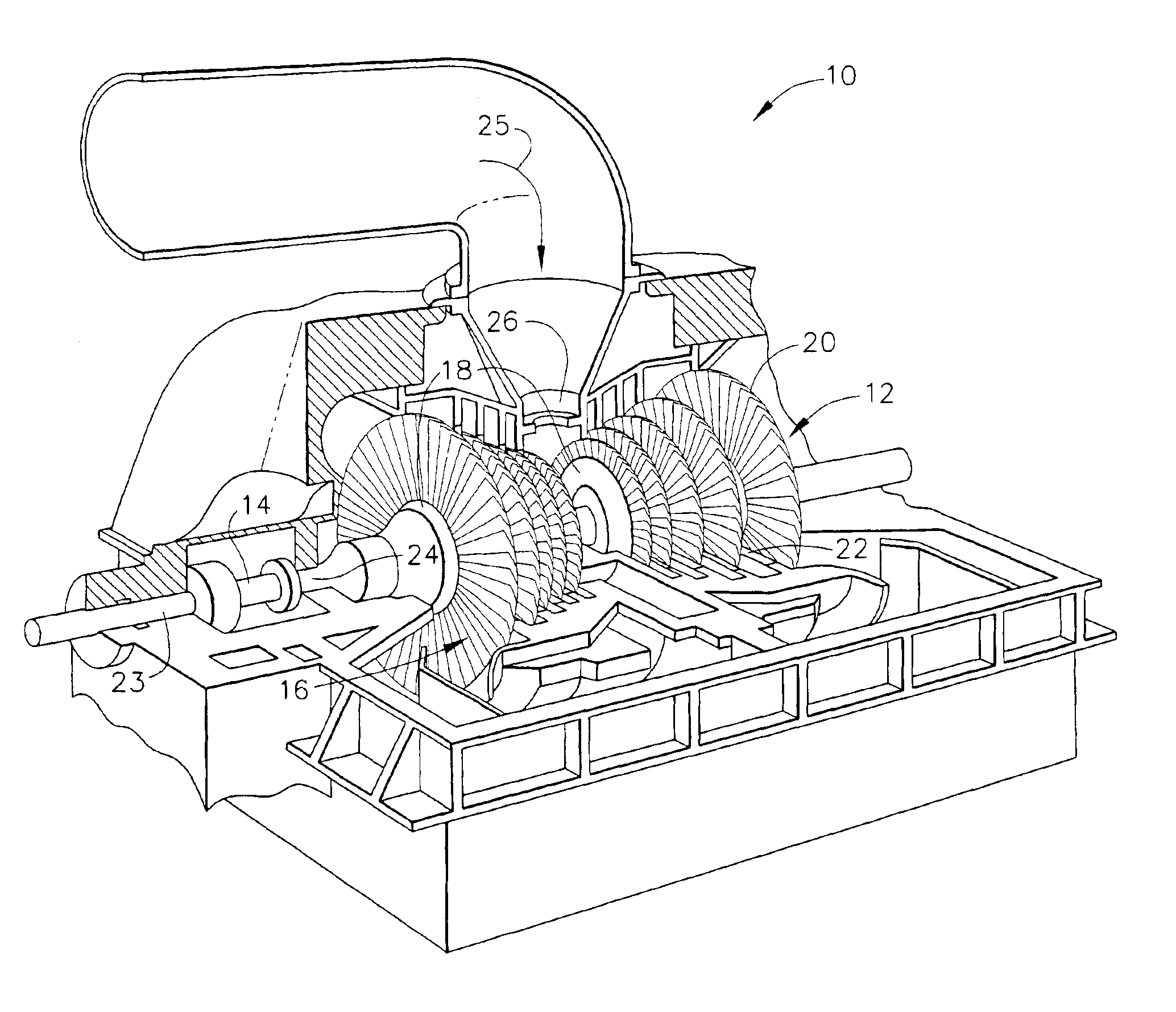Methods and systems for calculating steam turbine radial clearance
a technology of radial clearance and steam turbine, which is applied in the direction of mechanical roughness/irregularity measurement, distance measurement, instruments, etc., can solve the problems of rotor blade tips striking the surrounding casing, reducing the efficiency of the turbine, and excessive regenerative rubs
- Summary
- Abstract
- Description
- Claims
- Application Information
AI Technical Summary
Problems solved by technology
Method used
Image
Examples
Embodiment Construction
FIG. 1 is a perspective partial cut away view of an exemplary steam turbine 10 including a rotor 12 that includes a shaft 14 and a plurality of turbine stages 16. Turbine rotor 12 includes a plurality of axially spaced rotor wheels 18. A plurality of buckets 20 are mechanically coupled to each rotor wheel 18. More specifically, buckets 20 are arranged in rows that extend circumferentially around each rotor wheel 18. A plurality of stationary nozzles 22 extend circumferentially around shaft 14 and are axially positioned between adjacent rows of buckets 20. Nozzles 22 cooperate with buckets 20 to form each turbine stage 16 and to define a portion of a steam flow path through turbine 10. Shaft 14 is supported and guided in rotation by a plurality of bearings 23 and 24.
In operation, steam 25 enters an inlet 26 of turbine 10 and is channeled through nozzles 22. Nozzles 22 direct steam 25 downstream against buckets 20. Steam 25 passes through the remaining stages 16 imparting a force on b...
PUM
 Login to View More
Login to View More Abstract
Description
Claims
Application Information
 Login to View More
Login to View More - R&D
- Intellectual Property
- Life Sciences
- Materials
- Tech Scout
- Unparalleled Data Quality
- Higher Quality Content
- 60% Fewer Hallucinations
Browse by: Latest US Patents, China's latest patents, Technical Efficacy Thesaurus, Application Domain, Technology Topic, Popular Technical Reports.
© 2025 PatSnap. All rights reserved.Legal|Privacy policy|Modern Slavery Act Transparency Statement|Sitemap|About US| Contact US: help@patsnap.com



